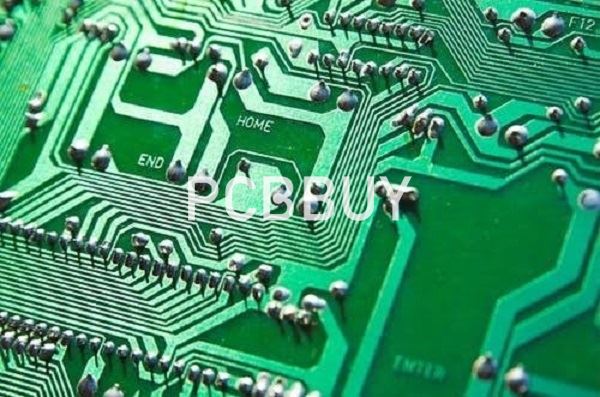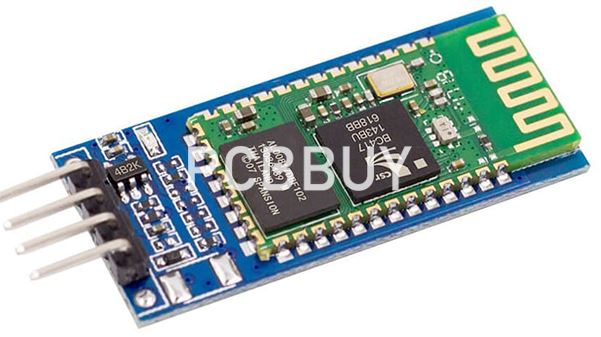Top 5 PCB Board Thermal Properties to Improve PCB Layout
By:PCBBUY 11/03/2021 09:26

Your PCB substrate materials also have some important thermal properties that should be considered during design. Not all boards will be deployed in harsh environments, but those that are needed to remain reliable throughout their lifetime. High temperatures, repeated thermal cycling, moisture uptake, and a low glass transition temperature can create problems during manufacturing and operation. If you pay attention to the right thermal properties of your substrate materials, you can ensure signal integrity and reliability.
In this passage, we are going provide you everything about PCB thermal properties. If you are interested in PCB thermal properties, please check and read the content we prepare for more information.

1. What is the best way to manage PCB thermal properties?
The best way to manage copper pads, copper traces, and copper planes in high-load applications is to test for, and monitor, the following:
· High Current
· Thermal Properties
· High Voltage
· Creepage
· High Potential
If you take into account the following areas above, you'll be well on your way to test and ensure your new PCB has everything it needs to function well with high-load applications.
2. How to manage PCB thermal?
A look at the specific thermal conductivity shows the importance of the continuous metallic path from the source to the sink and the performance potential of HSMtec. Copper conducts heat 1000 times better than FR4. The combination of integrated copper profiles with modern circuit board constructions such as micro and thermovias makes it possible to directly contact a soldering surface (components, heat sink) to the profiles, thereby avoiding bottlenecks in the thermal path.
A thermally optimized layer structure also ensures rapid heat spreading and thus supports the entire thermal concept. In the case of very small LED housings, filled microvias ensure a direct metallic connection to heat-conducting copper elements, which can be attached approximately 60 μm below the top layer of the circuit board.
3. What is thermal conductivity for PCB material?
The foreseeable future belongs to the FR4 and its derivatives. The material is stable, the insulation is reliable, the dielectric behavior is usable, the costs are acceptable, the processing is established and the heat resistance is tolerable. The derivatives are essentially generated by modifying the epoxy resin matrix. In the wake of the switch to lead-free electronics (~ RoHS), it has become common to replace part of the resin volume with mineral fillers. This delays the temperature-related increased Z-axis expansion of the circuit board (parameter CTE (z) = “Coefficient of thermal expansion”).
As a result of the higher temperature resistance, the likelihood that the circuit board will be damaged during soldering. One then speaks of “FR4 thermal conductivity with a higher Tg value” or also of “high Tg material”. The standard value for FR4 is 130 °, higher Tg values are 150 ° or 175 °, depending on the material manufacturer. In general, “Tg” is misleadingly translated as “glass transition temperature”. What is meant, however, is that the epoxy resin structure becomes soft and elastic as soon as the Tg value is reached and that the Z-axis expansion consequently increases considerably.

4. What is the importance of PCB thermal properties?
Your substrate selection is no longer limited to FR4, but you should not make the decision of PCB laminate selection lightly. You should first understand how different material properties affect your PCB and choose a laminate that satisfies your operational requirements accordingly. Don’t just listen to marketing speak from laminate manufacturers; take time to understand each of the substrate material properties and how they affect your PCB.
Some data for PCB material properties can be found online, but it’s best to consult with manufacturers, particularly for specialized laminate materials as no two laminates are exactly the same, nor are two lots exactly the same. More exotic materials such as ceramics and metal-core PCBs give a range of unique material properties.
The important PCB material properties all designers should understand fall into four areas: electrical, structural, mechanical, and thermal properties.
5. How to avoid high thermal expansion of PCB?
· Choose a material with a higher Tg, at least 160 degree Celsius
· Choose a material that can withstand higher temperature without decomposing, say around 335 degree Celsius
· Perform the delamination test for up to 35 minutes
· Choose a material with a more controlled z-axis expansion
· Plating thickness of the hole wall should be at least 1.2 mils
· Limit positive and negative etchback since they increase stress on the PCB board
· Perform shock and thermal testing
In addition to controlling CTE values, it is also advised to use metal core PCBs to suffice the requirement of high heat transfer. Carbon composite laminates (CCL) are also used for CTE control.
Industry Category











